EXPERIMENTAL ACTIVITY
The activity is performed mainly by nuclear magnetic and quadrupole resonance and muon spin spectroscopy on quantum materials. The main aim is to understand how the interplay between different degrees of freedom governs the quantum behavior of matter and promotes novel quantum phases.
KEYWORDS: Quantum Materials, Unconventional Superconductivity, Magnetism, Spin-Orbit entanglement, topological properties, Strongly electron-correlated systems, Muon Spin Spectroscopy, Nuclear magnetic Resonance, Nuclear Quadrupole Resonance
Main active research projects
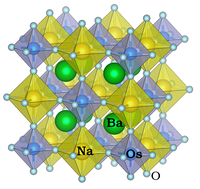
Novel quantum phenomena in materials with strong Spin-Orbit coupling
The interplay between spin, orbital, and charge degrees of freedom are believed to govern novel quantum states of materials with strong relativistic spin-orbit coupling [REF]. We study the quantum properties of the Osmium-based single and double perovskite compounds. The main aim is to investigate their magnetic ground states and to understand exotic magnetic multipolar phases of the Dirac-Mott insulators in double perovkites, and the nature of the Metal-Insulator transition in single perovskites.
In collaboration with Vesna Mitrovic (Brown University, USA), Patric Woodword (Ohio State University, USA), Cesare Franchini (University of Bologna and University of Wien, AU), Federico Boscherini (University of Bologna), Giuseppe Allodi (University of Parma, Italy), Valerio Scagnoli (Paul Sherrer Intitute, CH)
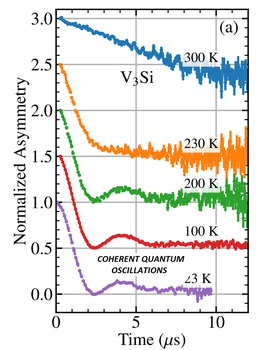
Quantum coherence and muon-nuclei quantum entangled states in matter
In this project we study quantum coherent states due to the interaction between the muons implanted in matter and the nuclear spins. In muon spin spectroscopy (µSR), the entanglement of muon and nearest-neighbor nuclear spins gives rise to an oscillatory time dependence of the muon polarization that can be detected and measured. Quantum coherence is well known in simple fluorides, where the peculiar, strong hydrogen-like bonding of the implanted positive muon to nearest-neighbor F ions (nuclear spin I=1/2), gives rise to coherent exchange of spin polarization between the initially polarized muon and the initially unpolarized fluorine nuclei. We extend the study to systems with nuclei with higher spin, which implies the inclusion of quadrupolar interactions, and consider the potentiality of this coherent oscillations to develop a quantum sensing technique of charge-related phenomena in matter.
This project is in collaboration with the Oxford University (UK) and University of Parma (Italy).
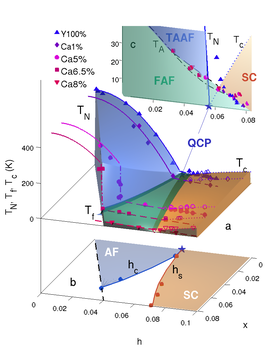
Superconductivity and topological properties
Superconductivity is a fascinating macroscopic quantum phenomenon which has attracted the interest of the scientific community for more than one century. Despite that and even though many technologies are now based on superconductors covering from medical diagnostic and research to energy and environmental purposes, the fundamental mechanism of superconductivity is still a mystery for many important classes of unconventional superconductors [REF].
We aim to unveil the hidden parameters controlling the microscopic mechanism of unconventional superconductivity, i.e. controlling the strength of Cooper pairing, in different superconducting families. A well established tradition of the group is the study of the nanoscopic coexistence of magnetism, charge density ordering and superconductivity in cuprates (mainly 123-like) and iron-based (mainly 1111) superconductors, as a function of doping, impurities, pressure.
We have recently started to study van der Waals 2D-superconductors with strong spin orbit coupling and novel vanadium-based kagome AV3Sb5 (A = K, Rb, Cs) superconductors to study their topological properties and the interplay between competing electronic phases, such as charge density order, hidden time reversal symmetry breaking and superconductivity. In collaboration with the PaRMA group (University of Parma, Italy) and Vesna Mitrovic (Brown University, USA) and Stephen Wilson (UC Santa Barbara, USA) research groups.
Novel (ferro)magnetic materials for automotive applications
The project is dedicated to the study of magnetic materials for the construction of permanent magnets for use in high-efficiency electric motors for automotive purposes. The transport sector is the main responsible of the air pollution in European cities (1/4 of total greenhouse gas emissions). The main aim of the project is to produce new eco-sustainable magnetic material with total or partial substitution of rare earth elements to improve motors in hybrid and plug-in electric vehicles, with a particular focus on reducing energy consumption and related CO2 emission. In collaboration with the CNR-IMEM (Parma, Italy) and Minarelli-Fantic Motors company.
HyPerMag PRIN-PNRR (2023-2025)
MAGMOVE FESR (2023-2025)
MADELEN FISA (2024-2026)
Molecular magnetism in Lanthanide nanomagnets
Molecular Magnetism is a research field that deals with the design and the investigation of new kind of magnets based on molecular units. Lanthanide complexes play a crucial role thanks to their large magnetic momentum and anisotropy [REF]. These features provide these systems with Single Ion Magnet (SIM) behavior, i.e. slow relaxation of the magnetization at low temperature and quantum tunneling effects. This makes them particularly appealing for the perspective creation of molecular devices for quantum information processing. We study the correlation between the electronic structure of the lanthanide ions in the complexes and the spin dynamics.
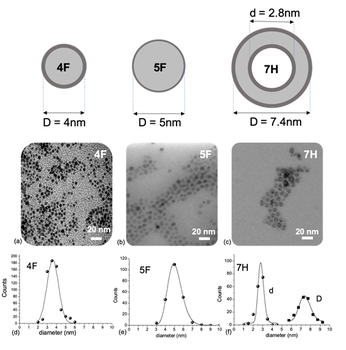
Spin dynamics in magnetic nanoparticles
Over the last 30 years a high number of studies concerning the magnetic properties of superparamagnetic nanostructures have been extensively studied, an effort motivated by the interest in the fundamental physics of low dimensional magnetic systems and by the widespread impact on medical and technological applications [REF]. Due to finite size effects, such as the high surface-to-volume atomic ratio and the single domain behaviour, magnetic nanoparticles exhibit considerably different magnetic properties than those found in their corresponding bulk materials. Here we aim to study the spin dynamics of the uncompensated surface spins which is expected to be different with respect to the one of the core spins, but still not well understood since it is difficult to be detected by many experimental techniques.
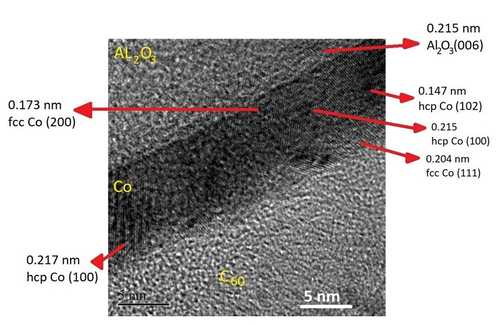
Spin manipulation at the Inorganic/molecular interface
The manipulation of electron spin and its associated magnetic moment is the key to build future electronic devices, which traditionally exploit just the electron charge in conventional inorganic materials such as metals and semiconductors. The very latest frontier of this field in the search for new materials is the study of heterostructures, such as molecules deposited on a ferromagnetic 3d metal which undergo extensive hybridization with the interface [REF1, REF2], yielding a highly spin-polarized molecular spinterface. The main aim of this project is to understand and control the key parameters which tune and modify the magnetic properties of thin ferromagnetic (FM), antiferromagnetic (AF) and paramagnetic (PM) films via their hybridization with selected molecular layers.
In collaboration with CNR-ISMN institute in Bologna, Italy.